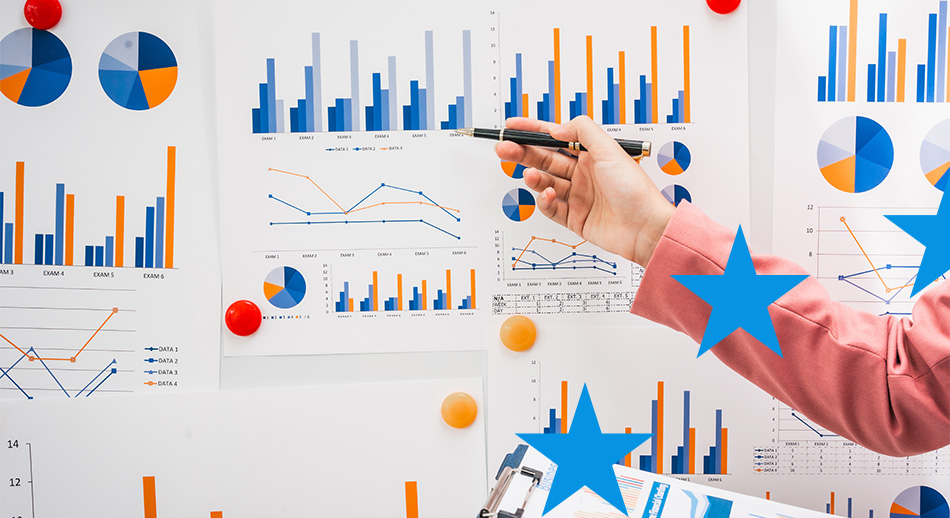There are many systems, articles and books dedicated to project management, but perhaps not everyone knows that the European Commission has developed its own methodology, called OpenPM2.
OpenPM2 a methodology for all Europrojectors
The OpenPM2 methodology is dedicated to all project managers and project teams looking for a free, effective and simple system to process and manage their European projects. OpenPM² is indeed suitable for any type of project, but is considered by the European Commission to be ideal for EU funds, programs, projects and grants.
It is a system inspired by decades of good practice in European projects. It was formalized in 2007, was further renewed in 2018, and is now used by the Commission and the European Council, the main departments and institutions of the European Union, and the various Agencies in charge of implementing EU programs and policies.
Whether you are new to europrojecting, an experienced europrojector eager to hone tools and techniques, a public body or an organization looking for a “standard” for managing your projects, OpenPM2 is the system for you.
A comprehensive guide
The OpenPM2 Guide is directly downloadable from the European Commission website. The Open PM2 Guide is also available in Italian, for easier access to the excellent project management tools offered by Open PM2 to all Europrojectors in our country.
Let us analyze its main contents together:
- A definition of the guide itself, its goals and potential beneficiaries. They are not very different from those in our Guide, but they have a definite orientation toward formalizing elements, processes and methodologies that are useful in developing and managing a project;
- An analysis of the main concepts used in this area. Answering the first, basic questions (whatis a “project”?) gets us on the right track(a “project” has assigned timeframes, a “unique” character, precise outputs, and various limitations that define its scope of operation);
- An overview of the PM2 methodology, with particular reference to its use at different stages of a project’s life, the different documentary forms in which it evolves (from the first draft to the final report, through the intermediate stages), and the “infrequent questions” that make a difference in the life of a project;
- An analysis of the main actors in the life of a project, their positioning with each other, and their roles: because every project is made up of people first and foremost, and it works when the people or groups that are part of it are able to give their best;
- An analysis that takes us, step by step and chapter by chapter, to follow theevolution of a project from its beginning to its end, with specific advice and a detailed discussion of intermediate stages, items to be produced, progressive checkpoints and responsibilities in carrying out the various processes;
- The different aspects that you need to keep track of throughout the life cycle of a project: performance, time, cost, relationships, needs, changes, risks, issues and decisions, quality, products, transition, operational aspects, and management of external resources.
The contents of OpenPM2 thus have a similar slant to one of the sections of our Guide: getting started…to work! – and are an inevitable supplement to it. And they represent as broad and systematic as we can offer you in this section on in-depth guides.
OpenPM2 A ready-to-use guide
The OpenPM2 guide goes beyond what is strictly stated in the manual: documents and solutions presented in the different chapters are accompanied by a comprehensive collection of ready-to-use templates to process and manage your project. There are templates for systematizing initial project ideas, templates for assessing their relevance andeffectiveness in the field and for target beneficiaries, templates for planning time, manner, responsibilities and resources within your project, templates for maintaining control of all aspects outlined in the guide, and more.
Templates are available in .docx and .xlsx formats so they can be quickly used, edited and adapted to your needs. A veritable mine of ideas and approaches for those working with projects.
OpenPM2 also provides for more interactive navigation and support from system curators through aspecial “wiki” platform accessible using an EU Login. Also through the EU Login, an overview of the guide translated into Italian can be downloaded. Don’t remember how EU Login works? You can also refer to these simple instructions, registration is quick and free: and as we have mentioned in the past, being registered will be useful for many activities within the European projects.
It is possible to obtain certification in the application of OpenPM2, although the relevant training program is currently accessible only to staff of community institutions.
Open PM2, a “way of thinking” about European projects”
Our Guide devotes ample space to “how to think about” European projects and attempts to provide an answer to the many questions concerning the field of Europrojecting. But now let’s put the two together and try to ask “the question of questions”: what should we ask ourselves when dealing with a European project, to “think” about it in the right way?
The tools available to those working in (or approaching) the field of europlanning provide information, operational guidance and conceptual elements that are also highly relevant, but rarely address a more existential issue: the mindset, attitudes and behaviors that make for a successful European project. These are “infrequent questions” that we often do not ask ourselves in dealing with European projects, but they can make all the difference.
We offer a review of them.
OpenPM2’s “mindsets,” or “mental approaches”
1. Use the best tools to find effective trade-offs between time, cost, scope, and quality in achieving project goals.
2. Remain aware that these tools serve project objectives, not vice versa.
3. Remain result-oriented at all stages and in all activities necessary for the development and management of a project.
4. Use planning as an indispensable organizational tool and strategic direction, not as a limitation to the opportunities and value that the project could generate.
5. Promote a project culture based on collaboration, clear communication, a sense of responsibility, and sound, shared ethical and professional principles.
6. Assign clear roles in project management, associating them with the most appropriate people to fill them for the good of the project.
7. Balance in the most productive way the “P’s” of project management, which may be in conflict with each other: Production, Processes, Planning, People, Rewards and Rewards, Participation, Perception and Policy.
8. Invest in developing technical and behavioral skills to best contribute to project implementation.
9. Involve project stakeholders in the organizational change needed to maximize project benefits.
10. Share knowledge, actively manage “lessons learned” and contribute to the improvement of project management within one’s own organization.
Open PM2’s “IAQs,” or Infrequently Asked Questions.
1. Do we know what we are doing? Develop a clear and shared vision for the project. Manage the project using a holistic approach and optimize the entire project, not just parts of it. Follow a process, but stay “agile” and try to remember regularly why you are doing something.
2. Do we know why we are doing this? Make sure the project is important, that someone really cares. Understand its goals, its value and impact, and its connection to a broader strategy. Give in advance a definition of “success” for the project and provide maximum value in terms of concrete results and real benefits.
3. Are the right people involved? People make projects work. The main criterion for engaging people and assigning project roles should be to serve the needs and goals of the project, not politics, friendship, functional hierarchy, proximity or convenience.
4. Do we know who is doing what? Know what you should do and make sure others know what they should do. Is this clear to everyone? Clearly define and understand roles, responsibilities, and commitments.
5. Do we go ahead at any cost or risk? Show respect for people’s work and the resources used, avoiding risky behavior and tactics. Keep in mind that it’s not just about the end result: how you get there also matters. Projects should be managed on the basis of positive values and principles.
6. Is it important? Not everything is equally important. Identify and agree on criteria and critical success factors for the project, identify the best achievable outcome (minimizing resources and risks), and allocate commitment and attention (tactical and strategic) to benefit both the objectives and sound project management.
7. Is this a task for “them” or for “us”? Ensure that people who act on the project and those who benefit from it work as a team and toward a common goal. Good teamwork always works: encourage clear, effective and frequent communication.
8. Should I be involved? Contribute from any position. Be proud of the skills, value and positive attitude you bring to the project, whatever it may be. Helping to involve everyone who needs to be involved. Promote and facilitate input from all stakeholders.
9. Have we improved? Commit to continually improving oneself and the organization by gathering and sharing knowledge. Reflect on how the project team can become more effective, adjusting practices and behaviors accordingly.
10. Is there life after the project? The project is only the beginning of the life cycle of the product or service you are going to propose! Ensure that the project contributes to its long-term success.
These may seem like very general questions and approaches, but they become extremely concrete once they are dropped and visualized in the life of our projects. What do you think? Tell us about your experience through our e-mail address and our Facebook and LinkedIn channels.




